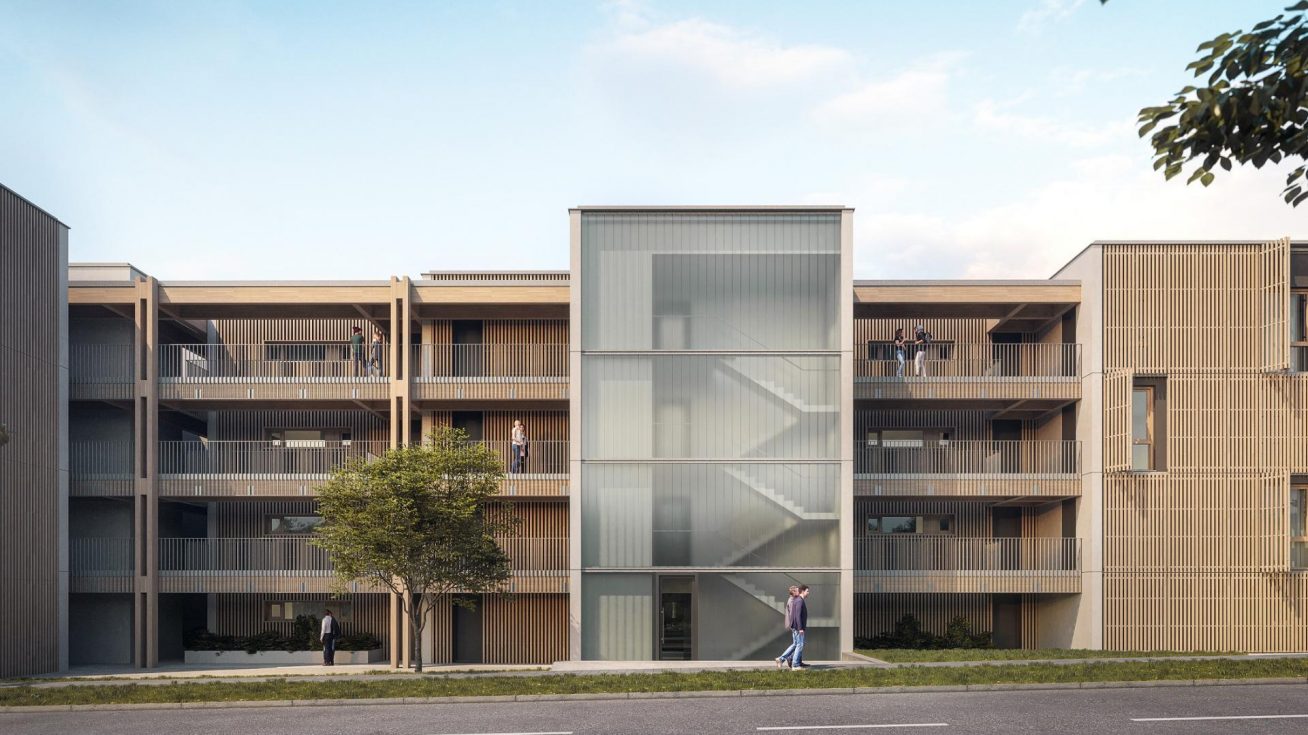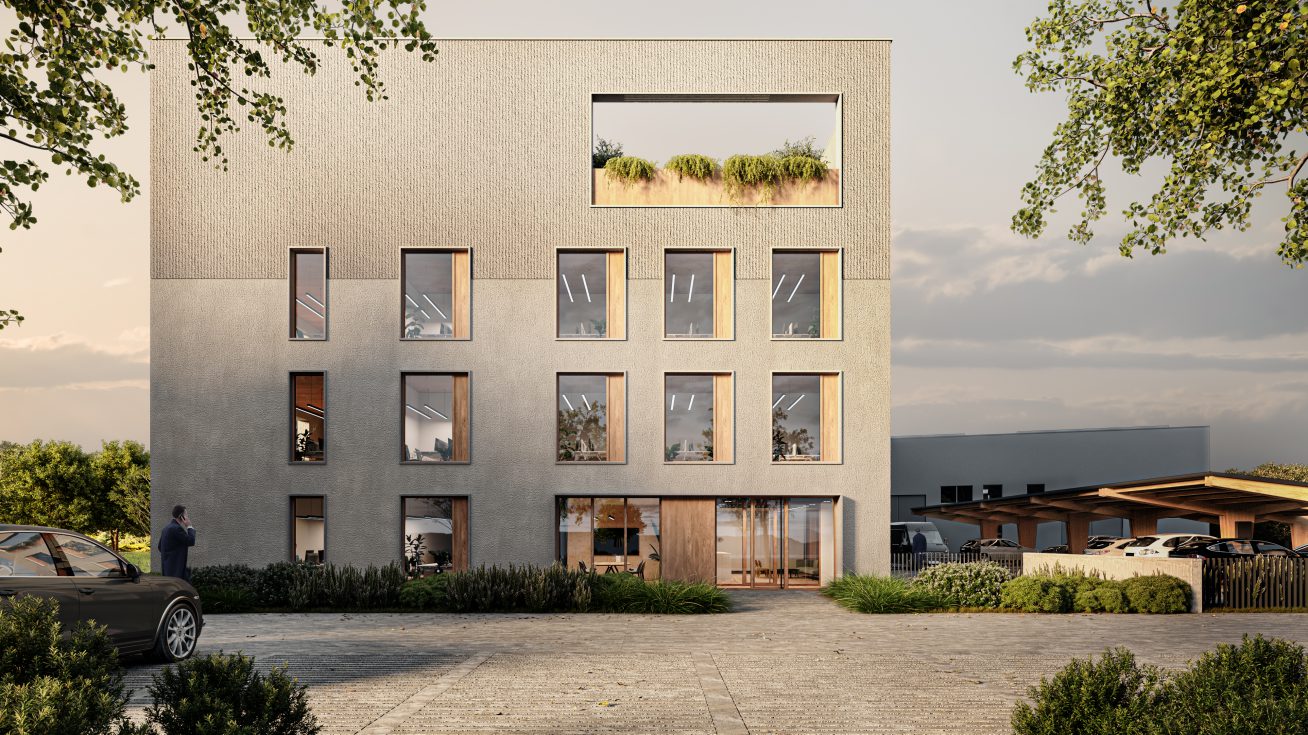
Timber buildings in the context of ESG: A future for developers?
The construction industry is undergoing a significant transformation in which, as with other industries, there is an increasing emphasis on ESG factors – Environment, Social, Governance. For developers looking for ways to achieve ESG targets while investing in sustainable buildings, timber buildings may be an interesting option. How can timber buildings in the context of ESG represent the future for developers?
What is ESG?
ESG is an acronym that includes three main categories:
- Environment: deals with the impact of business on the environment. In the context of buildings, it includes efforts to reduce greenhouse gas emissions, increase the energy efficiency of buildings, conserve natural resources, minimise waste and protect biodiversity.
- Social. stakeholders. It includes, for example, ensuring good working conditions for employees, a quality environment inside and outside buildings, respect for human rights and support for local communities.
- Governance: focuses on the ways in which the company and its projects are managed, the company’s system of controls and how it communicates with its suppliers. It includes transparency, ethical behaviour and quality management.
How to address ESG in buildings?
The first step in setting up ESG in a company is to prepare an ESG strategy. For the time being, each company sets its own ESG strategy and chooses the objectives and criteria that are relevant to it. However, there are also efforts within the European Union to harmonise and introduce standardised ESG reporting requirements. For this purpose, among others. the CSRD (Corporate Sustainability Reporting Directive) and others, which will require companies to report on their environmental and social impact and management practices in a step-by-step manner, depending on their size. For developers, architects, designers and construction companies, it is crucial to focus on strategies that will enable them to achieve ESG objectives within their projects and buildings. One of the main aspects is the choice of building materials used in the construction of buildings and their impact on all 3 ESG categories.
Timber buildings and the environment?
Timber buildings offer several advantages in terms of their environmental impact. Wood is a natural and renewable material that absorbs carbon dioxide during its growth(source). By using wood as the main building material, we can significantly reduce the so called “energy savings” compared to building with concrete, steel or bricks. embeddedCO2 emissions associated with construction. As the carbon footprint of construction is one of the key factors in development according to ESG standards, this benefit of timber over other common building materials is significant. In addition, wooden buildings are lighter and therefore less statically demanding for the necessary foundation structures, which saves the amount of materials used. Last but not least, wooden buildings have a higher construction speed compared to buildings made of concrete or bricks thanks to (partial) prefabrication.
Timber buildings and social aspects
In buildings with a timber structure, wood is often incorporated into the interior, which has a positive impact on the health and wellbeing of the occupants. Studies show that natural materials have a positive impact on work efficiency, creativity, concentration and also reduce heart rate, feelings of stress and depression. However, in the context of a healthy indoor environment, it is necessary to monitor the amount of volatile organic compounds (VOCs) found in varnishes and adhesives.
Wooden buildings and governance
Good governance and transparency are key aspects of ESG Governance. Developers can gain the trust of their investors and customers by using FSC, PEFC and other certified timber in their construction, which aims to protect forests and minimise illegal logging, thus guaranteeing environmentally responsible sourcing and management of timber.
Using wood to meet ESG targets
ESG criteria are becoming an increasingly important topic for developers due to pressure from legislation, investors and customers. Timber buildings offer a way to contribute to these goals. Reducing embedded carbon footprint, quality indoor environment and ensuring transparent origin are just some of the benefits that wooden buildings bring. Especially in the case of new buildings, wooden buildings are an interesting alternative to the commonly used building materials such as concrete or ceramic blocks.
However, the current Czech legislation, which limits the height of wooden buildings to a maximum of 12 metres, remains a barrier. This is despite the fact that in other parts of Europe, such as Scandinavia, Germany or Austria, buildings of 8-12 storeys and entire new urban districts are already being constructed out of wood. However, with the urgency of decarbonisation of the construction industry and the increasing pressure on ESG factors, we can expect increasing pressure to change this legislation in the future so that we in the Czech Republic also start to gradually approach these countries in wood construction. Even so, it is already possible to build four-storey wooden buildings such as apartment buildings or office buildings, of which several are currently being built in the Czech Republic. These smaller buildings can serve as pilot projects within the company’s portfolio so that with the change in legislation, the transformation of a larger part of the portfolio to a more sustainable one can come.
Sources:
Corporate Sustainability Reporting Directive (undated). Available from WWW:
TROSS, Kassey (2022). ESG in Commercial Real Estate: What You Need to Know VTS.com [online] 19. 12. 2022 Available from WWW: < https://www.vts.com/blog/esg-in-commercial-real-estate-what-you-need-to-know>.
Idaho Forest Products Commission (undated). Available from WWW:
VAVRINSKÝ, E.; KOTRADYOVÁ, V; SVOBODOVÁ, H; KOPÁNI, M; DONOVAL, M; SEDLÁK, ŠUBJAK S; ZÁVODNÍK J;. Advanced wireless sensors used to monitor the impact of environmental design on human physiology. In Advances in Electrical and Electronic Engineering. Vol. 17, No. 3 (2019), pp. 320-329. ISSN 1336-1376 (2019: 0.205 – SJR, Q3 – SJR Best Q). In the database: DOI: 10.15598/aeee.v17i3.3310 ; WOS: 000488257400011 ; SCOPUS: 2- p2.0-85073506187.
Grote, V.; Avian, A.; Frühwirth, M.; Hillebrand, C.; Köhldorfer, P.; Messer- schmidt, D.; Resch, V.; Schaumberger, K.; Zeiringer, C.; Mayrhoffer, M.; Moser, M. (2012): Gesundheitliche Auswirkungen einer Massivholzausstattung in der Hauptschule Haus im Ennstal. Kurzfassung. Human Research Institut. Weiz. Online verfügbar unter http://humanresearch.at/newwebcontent/wp-con- tent/uploads/2012/11/pfd_Schule_ohne_Stress_Folder_de.pdf, zuletzt geprüft am 19.01.2018


